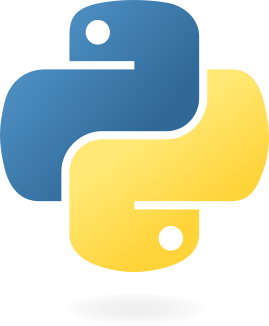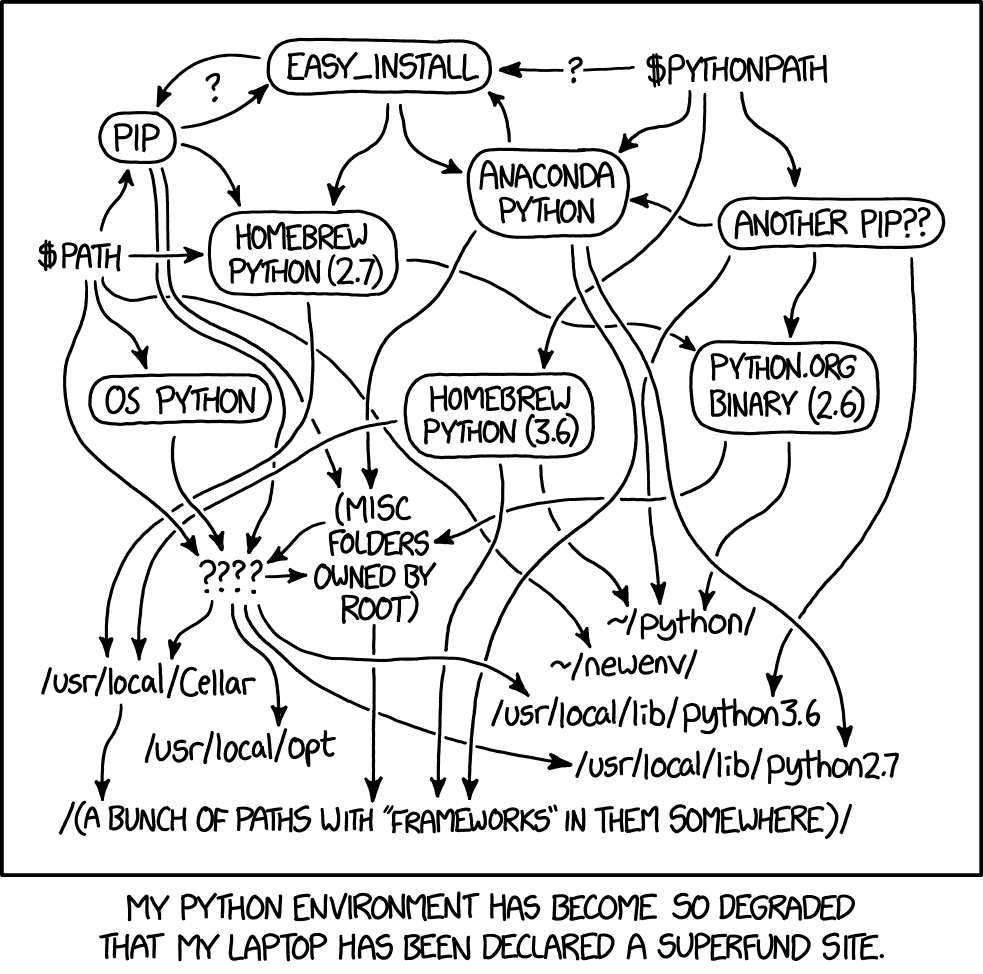Reducing the Overhead of Coupled Machine Learning Models between Python and Fortran
RSECon23, Swansea
NVIDIA
2023-09-05
Precursors
Licensing
Except where otherwise noted, these presentation materials are licensed under the Creative Commons Attribution-NonCommercial 4.0 International (CC BY-NC 4.0) License.
Slides
To access links or follow on your own device these slides can be found at
https://jackatkinson.net/slides
Introduction
The ICCS1
The Institute of Computing for Climate Science
- Domain-specific RSE group based at the University of Cambridge
- Embedded support to several international climate science projects

Climate Modelling
Climate models are large, complex, many-part systems.

Machine Learning
We typically think of Deep Learning as an end-to-end process;
a black box with an input and an output.

 Who’s that Pokémon?
Who’s that Pokémon?
\[\begin{bmatrix}\vdots\\a_{23}\\a_{24}\\a_{25}\\a_{26}\\a_{27}\\\vdots\\\end{bmatrix}=\begin{bmatrix}\vdots\\0\\0\\1\\0\\0\\\vdots\\\end{bmatrix}\] It’s Pikachu!
Neural Net by 3Blue1Brown under fair dealing.
Pikachu © The Pokemon Company, used under fair dealing.
Machine Learning in Science

Neural Net by 3Blue1Brown under fair dealing.
Pikachu © The Pokemon Company, used under fair dealing.
Replacing physics-based components
2 approaches:
- emulation, or
- data-driven.
Additional challenges:
- Physical compatibility
- Physics-based models have conservation laws
Required for accuracy and stability
- Physics-based models have conservation laws
- Language interoperation



Language interoperation
Many large scientific models are written in Fortran (or C, or C++).
Much machine learning is conducted in Python.







![]()
Mathematical Bridge by cmglee used under CC BY-SA 3.0
PyTorch, the PyTorch logo and any related marks are trademarks of The Linux Foundation.”
TensorFlow, the TensorFlow logo and any related marks are trademarks of Google Inc.
Solutions
Considerations
There are 2 types of efficiency:
Computational
Developer
An ideal solution should:
- not generate excess additional work,
- not require advanced computing skills,
- have a minimal learning curve,
- not add excess dependencies,
- be easy to maintain, and
- maximise performance.
Possible solutions
- Implement a NN in Fortran
- Forpy/CFFI
- SmartSim/Pipes
- Fortran-Keras Bridge
Possible solutions
- Implement a NN in Fortran
- Forpy/CFFI
- SmartSim/Pipes
- Fortran-Keras Bridge
- e.g.
inference-engine,neural-fortran, own solution etc.
- removes the two-language problem
- how do you ensure you port the model correctly?
- ML libraries are highly optimised, probably more so than your code.
Possible solutions
- Implement a NN in Fortran
- Forpy/CFFI
- SmartSim/Pipes
- Fortran-Keras Bridge
- brings python types into Fortran
- easy to add
forpy.modfile and compile
- verbose, with a learning curve
- need to manage and link python environment
- increases dependencies
Possible solutions
- Implement a NN in Fortran
- Forpy/CFFI
- SmartSim/Pipes
- Fortran-Keras Bridge
- pass data between workers through a network glue layer
- may be necessary for certain architectures
- steep learning curve
- involves data copying
Possible solutions
- Implement a NN in Fortran
- Forpy/CFFI
- SmartSim/Pipes
- Fortran-Keras Bridge
- pure Fortran
- TensorFlow (Keras) only
- inactive and incomplete
Possible solutions





Python
env
Python
runtime



xkcd #1987 by Randall Munroe, used under CC BY-NC 2.5

Interfacing Libraries
Both PyTorch and TensorFlow have C++ backends and provide APIs to access.
Binding Fortran to C is straightforward1 from 2003 using iso_c_binding.
PyTorch
- C++ API
- Archive model as Torchscript
- Statically typed subset of Python
- Read and run via any Torch API
TensorFlow
- C++ and C APIs
- Archive model as Keras SavedModel
process_modelprovided to extract required opaque parameters and use API
Performant - Computational
No-copy access in memory.
Indexing issues and associated reshape can be avoided with Torch accessor.

Performant - Ease of use
Installation
CMake
- Install libtorch, or the TensorFlow C API
- Clone
- Build using CMake (instructions provided)
- Install
- Link

CMake is a trademark of Kitware.
Tools
pt2ts.pyscript facilitates saving models to TorchScript.process_modelextracts TF model data.
Examples
- Guide users through process from saving a python model to running in Fortran.
- User-defined and preloaded (ResNet-18) cases.
Support
- Use frameworks’ implementations directly
- feature support
- future support
- direct translation of python models 1
Licensing and FOSS
The libraries are licensed under MIT and available as FOSS.
- Highly permissive for use by all
- OS development on GitHub using issues and PRs
Case Study
Gravity Wave parameterisation in MiMA
- Atmospheric model (Jucker and Gerber 2017)
- Replace physics-based gravity wave parameterisation
- Neural Net
- Emulating Alexander and Dunkerton (1999) gravity wave parameterisation.
- Fully-connected multi-layer net with identical Pytorch and TensorFlow versions
- Initially interfaced (slowly) using forpy (Espinosa et al. 2022)

Coding example
Replace the forpy connected net with our direct coupled approach.
Test both PyTorch and TensorFlow.
Given a Fortran program with model inputs in arrays,
the original coupling using forpy requires
67
lines of boilerplate code,
whilst our library takes
39.
A fork of MiMA with these implementations of the interfaces is at:
https://github.com/DataWaveProject/MiMA-machine-learning
e.g. Loading a Torch model
ie = forpy_initialize()
type(module_py) :: run_emulator
type(list) :: paths
type(object) :: model
type(tuple) :: args
type(str) :: py_model_dir
ie = str_create(py_model_dir, trim('/path/to/saved/model'))
ie = get_sys_path(paths)
ie = paths%append(py_model_dir)
! import python modules to `run_emulator`
ie = import_py(run_emulator, trim(model_name))
if (ie .ne. 0) then
call err_print
call error_mesg(__FILE__, __LINE__, "forpy model not loaded")
end if
! use python module `run_emulator` to load a trained model
ie = call_py(model, run_emulator, "name_of_init_function")
if (ie .ne. 0) then
call err_print
call error_mesg(__FILE__, __LINE__, "call to `initialize` failed")
end ife.g. Loading a Torch model
Conclusions
Take away messages
- Machine learning has many potential applications in scientific computing
- Leveraging it effectively requires care
- We have developed libraries allowing easy and efficient deployment of ML within Fortran models
- For new projects we advise using PyTorch
Future work
- Provide a tagged first release on github
- Publication through JOSS and zenodo
- Further test GPU functionalities
- Implement functionalities beyond inference?
- Online training is likely to become important
Get involved
- Inform potential users
- Further testing and feedback wanted!
- Developers welcome
Closing slide, thanks, and questions
The libraries can be found at:
Torch: https://github.com/Cambridge-ICCS/fortran-pytorch-lib
TensorFlow: https://github.com/Cambridge-ICCS/fortran-tf-lib
Slides available at: https://jackatkinson.net/slides/RSECon23/RSECon23.html
Get in touch:
The ICCS is funded by 

References
Code
The libraries can be found at:
- Torch: https://github.com/Cambridge-ICCS/fortran-pytorch-lib
- TensorFlow: https://github.com/Cambridge-ICCS/fortran-tf-lib
Their implementation in the MiMA model can be found at:
https://github.com/DataWaveProject/MiMA-machine-learning
Benchmarking of PyTorch can be found at:
https://github.com/Cambridge-ICCS/fortran-pytorch-lib-benchmark/
Bonus Content ![]()
Code Example - PyTorch
- Take model file
- Save as TorchScript
Code Example - PyTorch
Neccessary imports:
use, intrinsic :: iso_c_binding, only: c_int64_t, c_float, c_char, &
c_null_char, c_ptr, c_loc
use ftorchLoading a pytorch model:
Code Example - PyTorch
Tensor creation from Fortran arrays:
! Fortran variables
real, dimension(:,:), target :: SST, model_output
! C/Torch variables
integer(c_int), parameter :: dims_T = 2
integer(c_int64_t) :: shape_T(dims_T)
integer(c_int), parameter :: n_inputs = 1
type(torch_tensor), dimension(n_inputs), target :: model_inputs
type(torch_tensor) :: model_output_T
shape_T = shape(SST)
model_inputs(1) = torch_tensor_from_blob(c_loc(SST), dims_T, shape_T &
torch_kFloat64, torch_kCPU)
model_output = torch_tensor_from_blob(c_loc(output), dims_T, shape_T, &
torch_kFloat64, torch_kCPU)Code Example - PyTorch
Running the model
Cleaning up:
Results
Timings (real seconds) for computing gravity wave drag in-situ.1
| Forpy | Direct | % Direct/Forpy | |
|---|---|---|---|
| PyTorch | 94.43 s | 134.81 s | 142.8 % |
| TensorFlow | 667.16 s | 170.31 s | 25.5 % |
Timing data (real seconds) for benchmarking gravity wave drag with PyTorch on CSD3.
| intel | Forpy | Direct | % Direct/Forpy |
|---|---|---|---|
| Mean | 0.3126 s | 0.3509 s | 112.3 % |
| Std | 0.0420 s | 0.0547 s | - |
| gcc | Forpy | Direct | % Direct/Forpy |
|---|---|---|---|
| Mean | 0.3405 s | 0.3669 s | 107.7 % |
| Std | 0.0449 s | 0.0586 s | - |

